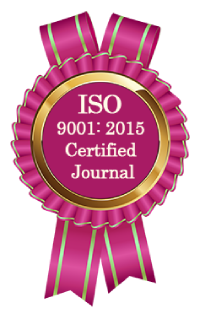
World Journal of Pharmacy and
Pharmaceutical Sciences
( An ISO 9001:2015 Certified International Journal )
An International Peer Reviewed Journal for Pharmaceutical and Medical Research and Technology





 |
|||||||||||||
|
| All | Since 2019 | |
| Citation | 5450 | 3969 |
| h-index | 23 | 20 |
| i10-index | 134 | 84 |
 Search
Search News & Updation
News & Updation
REVIEW ON TRANSDERMAL DRUG DELIVERY SYSTEM
Prinsy Rana*, G. Ganarajan and Preeti Kothiyal
ABSTRACT A transdermal patch is a medicated adhesive patch that is placed on the skin to deliver a specific dose of medication through the skin and into the bloodstream often, this promotes healing to an injured area of the body. An advantage of a transdermal drug delivery route over other types of medication delivery such as oral, topical, intravenous, intramuscular, etc. is that the patch provides a controlled release of the medication into the patient, usually through either a porous membrane covering a reservoir of medication or through body heat melting thin layers of medication embedded in the adhesive. The main disadvantage to transdermal delivery systems stems from the fact that the skin is a very effective barrier; as a result, only medications whose molecules are small enough to penetrate the skin can be delivered by this method. A wide variety of pharmaceuticals are now available in transdermal patch form. The first commercially available prescription patch was approved by the U.S. Food and Drug Administration in December 1979. These patches administered scopolamine for motion sickness. Delivery of drugs through the skin has been always a challenging area for research due to barrier properties exhibit by the outermost layer of skin stratum corneum. In the last two decades, the transdermal drug delivery system has become a proven technology that offers significant clinical benefits over other dosage forms. Because transdermal drug delivery offers controlled as well as predetermined rate of release of the drug into the patient, it able to maintain steady state blood concentration. It’s a desirable form of drug delivery because of the obvious advantages e.g.convenient and pain-free self-administration for patients, avoidance of hepatic first-pass metabolism and the GI tract for poorly bioavailable drugs over other routes of delivery. The outlook for continued growth of the TDD market is very optimistic. Transdermal drug delivery has made an important contribution to medical practice, but has yet to fully achieve its potential as an alternative to oral delivery and hypodermic injections. This review emphasizes the three generations of transdermal drug delivery which start a new era of delivery of drug. Keywords: Transdermal drug delivery has made an important contribution to medical practice, but has yet to fully achieve its potential as an alternative to oral delivery and hypodermic injections. [Download Article] [Download Certifiate] |
